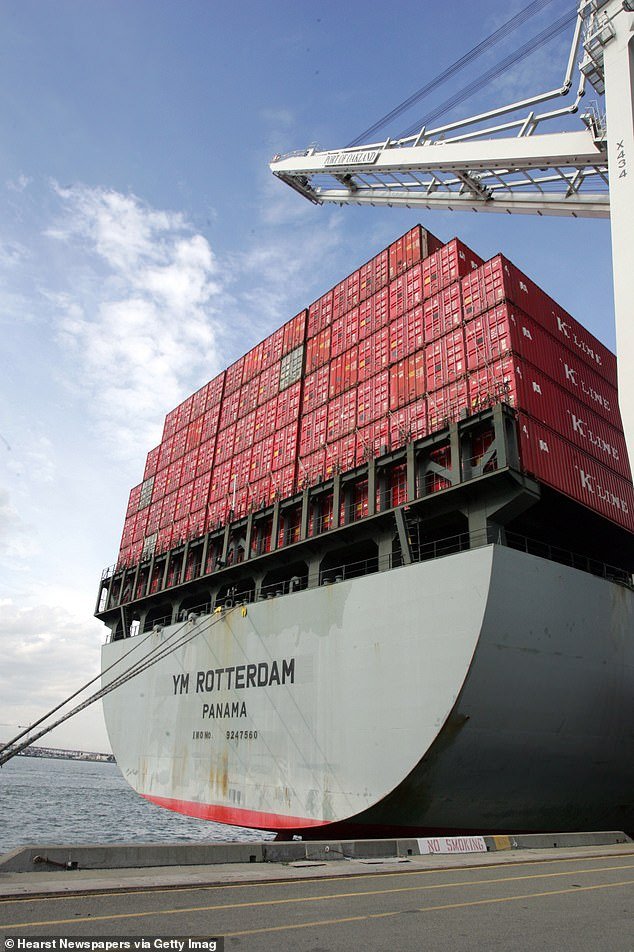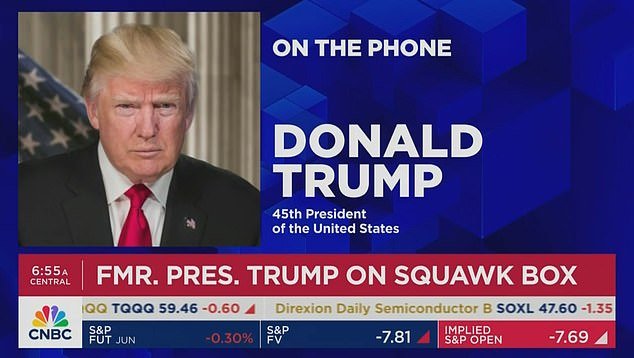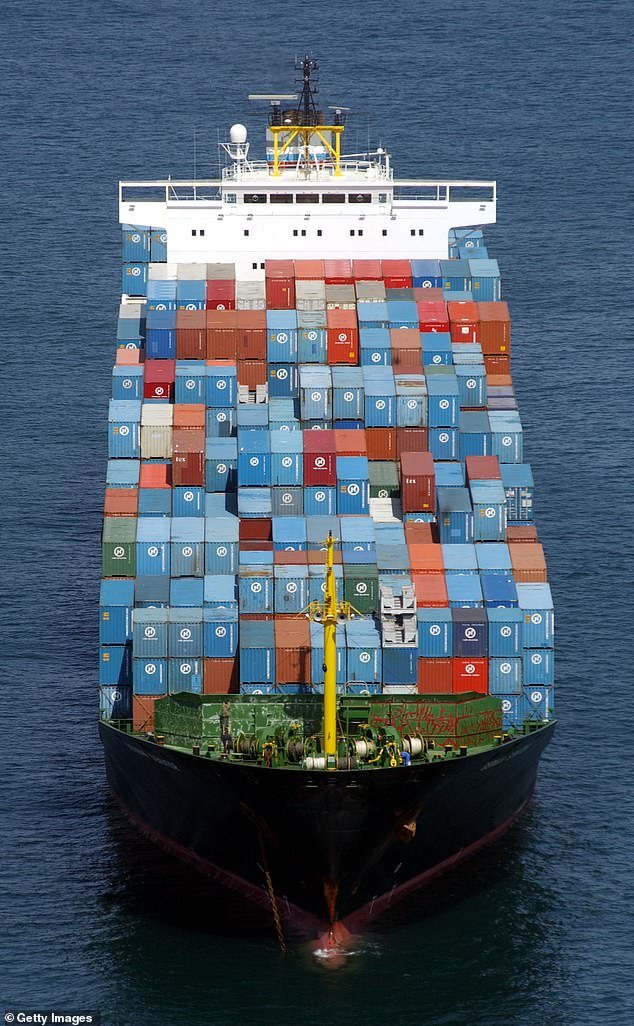What would Trump’s 10% tariff on all imports mean for you? The ex-president’s plans would cost American families $1,500 and lead to a $90 tax hike on food, progressive class action claims
Former President Donald Trump has indicated he would impose new tariffs if elected president for a second term, but a new study from a left-wing organization shows his tariffs would increase costs for American families.
Trump has provided few details about his economic plans when he returns to the White House, but he has said he would impose 10 percent tariffs on all imports.
A new analysis from the Center for American Progress Action Fund, which was founded by Democrats, found that the tariff would amount to an annual tax increase of roughly $1,500 for the typical American household.
It would include a $90 tax increase on food, a $90 tax increase on prescription drugs and a $120 tax increase on oil and petroleum products.
The study found that while tax increases would raise the price of goods, they would fail to significantly boost U.S. production and employment.
“We have a candidate who is proposing a 10 percent across-the-board tax on all U.S. imports, and we’re seeing this have a very large effect on the average family’s cost of living,” said Brendan Duke, co-author of the analysis.
The estimates for the increases come as the United States is already experiencing higher prices due to rising inflation due to the coronavirus pandemic and higher interest rates as the Federal Reserve took aggressive action to combat inflation.
A new analysis finds that Donald Trump’s proposed 10% tariffs on all imports would increase costs for households by $1,500 per year

Trump has proposed 10% tariffs on all imports and has said he is considering imposing 60% tariffs on Chinese goods
It estimates that Americans will import $3.2 trillion in goods next year, so a 10 percent tariff would effectively increase taxes on goods by about $300 billion.
That would average $1,700 per household in the first year. But when looking at middle-income households, which consume about 85 percent as much as the average household, according to Consumer Expenditure Surveys, this suggests a tax increase of roughly $1,500 for the average household.
For food, the rates would amount to a $90 tax increase, the analysis found. 60 percent of fresh fruit to the US is imported, as are 38 percent of fresh vegetables. 70 to 85 percent of seafood is imported. And less than 1 percent of coffee is produced in the United States.
A tariff would also raise prices in the long run as U.S. farmers face higher costs to get supplies from abroad.
On top of the increases for food, prescriptions and oil, it would include an $80 tax increase on electronics, $220 on cars, motorcycles and recreational boats, a $70 increase on clothing and a $50 increase on furniture, kitchen appliances and other household items.
The largest category of impact is on materials and equipment for U.S. businesses, which would see a $610 tax increase.
“Services are not directly affected by the rate, but it does drive up their costs because the doctor will need equipment, they will need office furniture, and the building they are in will need building materials,” Duke said. “All those costs go up and they are ultimately passed on to the consumer.”

In an interview with CNBC in March, Trump said he is a “strong supporter” of tariffs

Analysis shows that a 10% tariff on all imports would result in a $90 tax increase on food, a $90 increase on prescription drugs and a $120 increase on oil and petroleum products per year.
In a speech on CNBC earlier this month, Trump stated, “I’m a big believer in tariffs.”
“I fully believe in economics when other countries take advantage of you,” the Republican presidential candidate told Squawk Box in an interview.
The comments came after he first proposed the 10 percent tariffs on all imports last year.
“If companies come in and dump their products in the United States, they automatically have to pay, let’s say, a 10 percent tax,” Trump said in a Fox Business interview at the time. “I like that 10 percent for everyone.”
Trump has argued that tariffs are aimed at China, but a blanket 10 percent tariff would not only affect imports from China.
Although the US receives the largest amount of imported goods from China, the country supplies only 16.5 percent of its total goods imports, according to the Office of the US Trade Representative. Some other major importers are Mexico, Canada, Japan and Germany.
The Center for American Progress Action Fund was founded by a number of Democrats, including longtime Clinton family ally John Podesta, but other studies of the tariff proposal have suggested similar cost increases.
The Tax Foundation, a center-right organization, concluded that a 10 percent rate would raise taxes on Americans by more than $300 billion a year and warned that the tariffs, if imposed, would lead to retaliatory tax hikes on U.S. exports.
It estimates that a 10 percent tariff on imports would shrink the size of the economy by 0.7 percent and eliminate more than half a million jobs.
Including retaliatory tax hikes, the move would shrink the U.S. economy by 1.1% and threaten more than 825,000 jobs, the Tax Foundation estimates.
During his first term, Trump imposed a number of tariffs on China, Mexico and the European Union, including a 25 percent tariff on steel and 10 percent on aluminum.
In total, the tariffs imposed during the Trump administration amounted to an $80 billion tax increase on $380 billion in imports, the Tax Foundation found.
The Biden administration maintained most of these rates.
Separately from the 10 percent tariff proposal, Trump said last month he was considering a plan to impose tariffs of 60 percent or more on Chinese goods.
